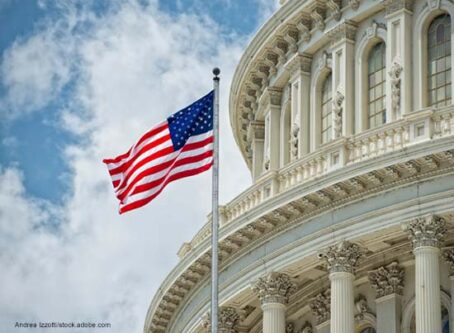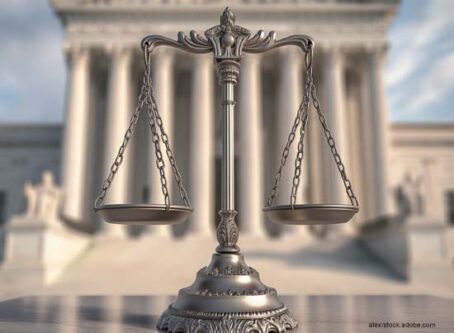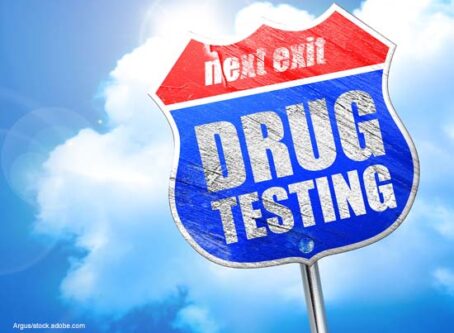White House announces several actions to tighten truck emission standards
The federal government is going all-in on cleaner transportation with the White House announcing several actions addressing greenhouse gas emission, including stricter emission standards for trucks.
On Monday, March 7, Vice President Kamala Harris announced significant actions being taken by the federal government to address transportation emission of greenhouse gases. Actions include stricter emission standards for heavy-duty trucks, lower emissions at the ports, and another SuperTruck program to develop zero-emission truck technology.
However, some stakeholders, including the Owner-Operator Independent Drivers Association, is calling the actions “government overreach.”
Stricter truck emission standards
The U.S. Environmental Protection Agency is proposing a rule that will dramatically reduce nitrogen oxide emissions on new trucks.
According to the White House, the EPA will go through the rulemaking process to tighten emission standard on heavy-duty trucks. If passed, the new standards will reduce NOx emissions from trucks by as much as 90% by 2031.
The EPA’s proposed rule will “change the heavy-duty emission control program – including the standards, test procedures, useful life, warranty, and other requirements-to further reduce the air quality impacts of heavy-duty engines across a range of operating conditions and over a longer period of the operational life of heavy-duty engines.”
Specifically, the EPA is proposing two options that are referred to as simply Option 1 and Option 2. Both options begin with model year 2027 trucks. However, Option 1 requires more action with model year 2031 trucks. For the most part, Option 2 emission standards are less strict than Option 1 standards.
Additionally, the proposal calls for increasing the “stringency of the existing (greenhouse gas) standards for (model year) 2027 trucks.” The EPA wants to update emission standards for certain model year 2027 trucks. Affected trucks comprise mostly of truck applications where electric vehicles are feasible – e.g., short-haul and regional applications. New greenhouse gas emission standards for all trucks may begin as soon as model year 2030.
Opposition to proposed emission standards
The White House’s announcement stems from the EPA’s Cleaner Trucks Initiative, which solicited input from stakeholders.
Announced in November 2018, the Cleaner Trucks Initiative will tighten truck emission standards by getting rid of out-of-date regulations. The Owner-Operator Independent Drivers Association attended a roundtable discussion with the EPA to provide the perspective of small-business truckers. The initiative was a loose outline without many details.
The recent surge of action from the federal government comes after the EPA engaged with stakeholders to draft several options. However, some stakeholders’ concerns may have fallen upon deaf ears.
“When the Cleaner Trucks Initiative was first announced in 2020, OOIDA stood side-by-side with EPA in hopes that a collaborative rulemaking process with input from professional truck drivers would result in practical emissions standards,” OOIDA said in a statement. “Today’s announcement largely ignores that goal in favor of government overreach that will almost assuredly force safe drivers off the road, especially small-business truckers and owner-operators.”
OOIDA states that while Vice President Harris spent her time pointing out emissions coming from trucks, she failed to mention how truckers continued to deliver everything, including necessities and emergency relief, during the pandemic.
“Make no mistake, clean air is a priority for everyone. However, we believe there is a more realistic path forward to reducing commercial vehicle emissions that actually involves listening to men and women in the trucking industry,” the Association states. “We hope EPA will get back to that strategy as they develop the Final Cleaner Trucks Initiative Rule throughout the rest of the year. Truckers know all too well from experience with previous rulemakings that poorly implemented regulations will result in breakdowns, downtime, and ultimately set back the goal of achieving cleaner air.”
SuperTruck 3
The Department of Energy is continuing its SuperTruck Initiative to address the problem of high costs for zero-emission trucks.
Launched in 2009, the first SuperTruck program challenged the industry to improve heavy-duty truck freight efficiency by 50%. SuperTruck 2, which will end this year, will develop technology that doubles the fuel economy for trucks, according to the White House. SuperTruck 3 will focs on reducing costs and improving durability in zero-emission hydrogen and battery electric trucks.
One challenge for stakeholders is the cost barrier associated with zero-emission trucks. According to the National Renewable Energy Lab, the total cost of operations for zero-emission electric trucks can match diesel trucks all truck applications by 2035.
Cleaner ports
Having been the initial target for stricter emission standards, the White House wants to expand on cleaner drayage trucks.
The Infrastructure Investment and Jobs Act funds the expansion of the U.S. Department of Transportation’s Port Infrastructure Development Program. Nearly $450 million is available in new grant funding.
The U.S. DOT will be looking for projects that reduce emissions when awarding grants. That includes a much-needed charging infrastructure for drayage trucks. The $1 trillion infrastructure bill also funds grants to reduce truck idling and emissions at ports.
Zero-emission public sector truck fleet
The infrastructure bill also will fund efforts to lower emissions from the nation’s trucking fleets and freight infrastructure.
The Federal Transit Administration and Federal Highway Administration will help states purchase medium- and heavy-duty zero-emission vehicles. The U.S. DOT’s new electric vehicle charging guidance to states includes eligibility to support charging infrastructure for trucks.
However, cleaner truck technology is not quite ready for primetime for many truck applications. Addressing that issue, the Department of Energy will study “how to advance clean, affordable hydrogen and electrification corridor solutions to connect ports, highways, and end users, and provide clean freight solutions to move goods and materials from first mile to the last.”
Setting an example, the federal fleet of more than 110,000 trucks will switch over to zero-emission models. According to the White House, federal agencies can acquire 38 different models of zero-emission vehicles through the General Services Administration. That’s more than twice the number of vehicles available during fiscal year 2021.
Executive Order 14057 calls for 100% of all annual truck acquisitions within the federal government to be zero-emission by 2035. LL









